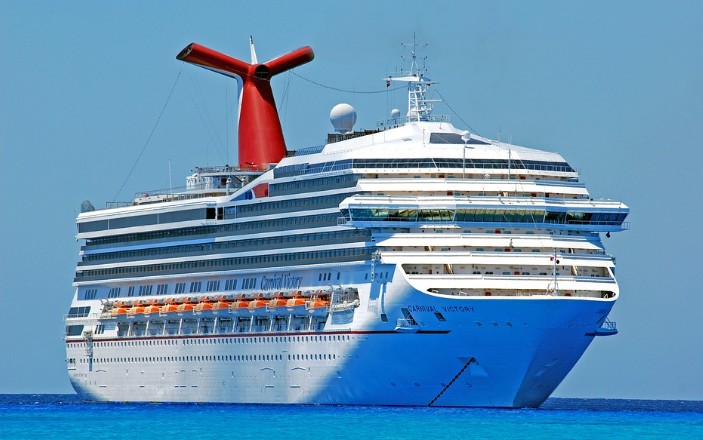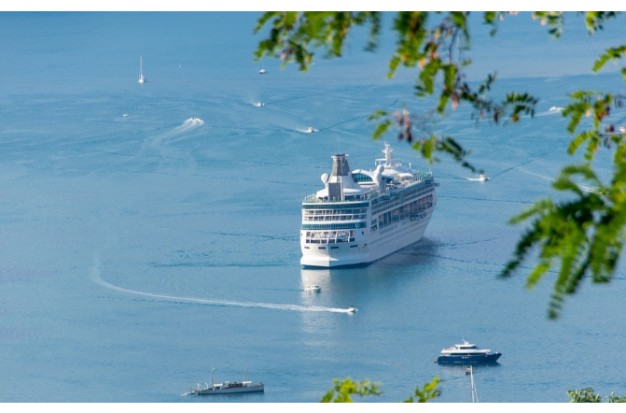When that happens, ships anchor offshore, and passengers must board a cruise ship tender to get ashore. Tendering is the process of transporting passengers from an anchored ship to land during a cruise.
Larger cruise ships have tender boats that are especially made with safety and stability in mind to transport groups of passengers here and there. They frequently have covers or are enclosed to provide passengers with weather protection. They typically have flat bottoms, giving passengers the greatest stability possible during boarding and unloading. They frequently serve as lifeboats in the event of an emergency.
Tender On A Cruise Ship: What Does It Mean?
When smaller passenger ships or lifeboats are used to transport passengers from the cruise ship to a port, this is known as tendering. This happens when a port is full of other ships or when the cruise ship is too large to fit into it. Since this is stated in the itinerary, passengers can determine if a cruise is tendered before making a reservation.
When passengers tender, they travel from the cruise ship to the port on a smaller boat or lifeboat. When a ship is too large to fit into a particular port or when another ship is already docked there, tendering typically occurs.
Due to the itinerary’s detailed description, passengers can determine whether a port is tender prior to a cruise.
Can You Tell If You Have To Tender Before The Cruise?
Before making a reservation, you can usually check the cruise itinerary to see if the ports are docked or require tendering if you are concerned about it or would prefer not to. Cruises that require tendering can most definitely be avoided. You won’t likely need to tender if you chose a cruise with city ports.
Your itinerary will specify whether ports are docked or tendered when you book your cruise. The schedule for my weekend cruise with Celebrity Cruises is listed below. A list of the top cruise tender ports in the United States, the Caribbean, and Europe is provided at the end of this article. Almost any port can be determined to be a tender port.
Using a tender boat is necessary because large ships might not fit into some ports. A tender is offered so visitors can travel to land, though this does not stop them from visiting these places. In smaller ports where mid- or large-sized ships cannot fit, they are also used. And finally, safety should always come first. There might be shallow waters.
What Types Of Boats Are Used As Tender Boats?
The tender boats are typically lifeboats from the ship, though occasionally they can be obtained through an outside company. During the tendering process, several tenders frequently run concurrently. Typically, there is a line at the pier for passengers, who are then loaded onto the tenders as they arrive.
Only the largest lifeboats will be used in the tender process, and cruise ship lifeboats typically have a capacity of 150–200 passengers.
Why Is It Important To Tender?
The need for your ship to tender rather than dock at some ports can arise for a variety of factors. Booking a cruise with tender ports shouldn’t scare you away; it’s fun!
Yes, getting on and off the ship requires a little more work than just walking away when docked, but bear in mind that your cruise line has been doing this for years and has perfected the tendering process. Here are some scenarios in which you might have to tender.
The ships of today are getting bigger, and while they are made to provide the best onboard experience, they aren’t always made to fit into a particular port. But this doesn’t stop them from traveling to specific locations; they will just need to offer a tender to get you there.
Even some of the smaller ships that are currently at sea are sometimes unable to fit into ports. The ports in some of Europe’s most famous cities, which are frequently small and rich in tradition, are where you’ll most frequently find this. It is also typical throughout the Caribbean, and it is particularly prevalent on private islands without much of a port area.
Will You Know If There Is Tendering Before Booking Your Cruise?
You can check the itinerary before booking excursions to see if they are docked or tendered if you prefer not to tender from a cruise line. By visiting city ports, where you have a better chance of not having to tender, you can stay away from cruises that use tendering.
Top 6 Pro Tips For Cruise Ship Tendering
Here are some pointers to remember when tendering on a cruise ship.
Refrain From Taking The Last Tender To Return
Avoid returning within one or two hours of the last tender because this is the busiest time. You can avoid the lines if you can return a few hours earlier. It is not a good idea to do this at the last minute for the final tender.
Don’t Be Quick To Go On The First Tender
We advise that you get off the ship gradually. This lets you take your time eating breakfast on the ship and explore after the rush of guests has dispersed. When there is no lengthy line, tendering is more enjoyable.
If you sign up for a scheduled shore excursion, you’ll likely meet on your ship before you tender together. You might have to get together on land in other circumstances. You’ll need more time to complete this.

Avoid Booking Independent Excursions With Early Starts
If you do not have priority tendering, you may want to avoid any excursions with an early start, as you may not get an early tender.
There is a chance that you might miss your activity if you can’t get to land. Priority tendering comes in handy in this situation so that no passengers are left behind when it’s time to disembark.
Go To The Top Deck Or Front Of The Tender If You Are Prone To Motion Sickness
Put yourself in the front of the tender near the windows or at the top if you are prone to seasickness. You’ll feel a lot better thanks to the breeze. If you ask to be seated up front or at the top of the tender, the crew will point you in the direction of a seat.
Why Would A Ship Make A Port Call To Tender Passengers Ashore?
Docking and tendering are very different from one another. Both terms refer to a ship stopping so that its passengers can disembark and explore a particular port, but they each describe the process in a different way.
A ship docks when it enters a port and permits passengers to disembark using gangplanks, stairs, or bridges that link the ship to the pier. This makes it possible for passengers to disembark quickly and step off the ship right away.
The opposite of tendering is when a ship anchors off the coast of a city or an island and passengers are then loaded onto small boats and transported to the shore via a short boat ride (whether it lasts 10 minutes or 45 minutes).
Large cruise ships of today simply cannot fit in some ports, particularly the older ports in Europe’s small Mediterranean port towns.
Cruise ships may be accommodated in other ports, but possibly only one at a time. Therefore, any additional cruise ships must anchor at a designated location offshore if there is already a large ship in the port. Then, with the aid of smaller boats, they tender their passengers to land.
Tendering is very popular in small ports with little room for large ships, even though docking is the more typical way for passengers to disembark. Some ports require ships using tendering to anchor far from the shore, frequently 20 minutes away by boat.
Conclusion
Whatever the reason, tendering while on a cruise can be a thrilling experience. You might take a thrilling boat ride to a stunning new port town, where you’ll get to spend the day exploring. You can view your ship in all its splendor from the water by boarding a tender boat to travel to shore.
This offers a rare chance to view the ship from the water and take in its breathtaking beauty while taking a few pictures from the water’s surface. Relax and think of the tendering procedure as just another exciting part of your cruise ship vacation, whether it takes a few minutes or a few hours.

